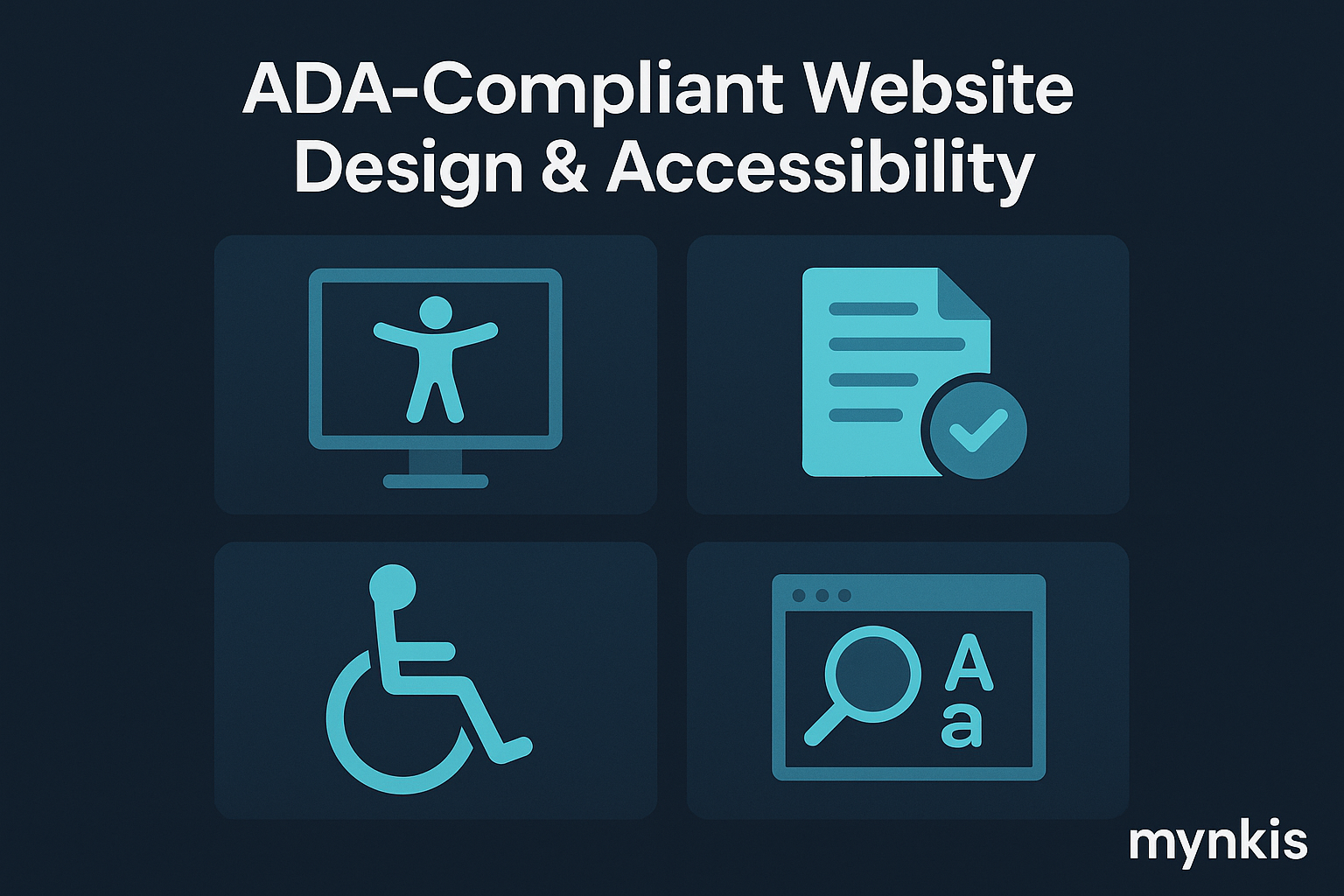Schedule a Demo
Ensuring your website meets Americans with Disabilities Act (ADA) standards isn't just about legal compliance; it's about creating an inclusive online environment. In my work with various business owners, I've seen how accessibility goes beyond ethics—it's essential for expanding your audience and strengthening your brand's reputation.
At its core, ADA compliance seeks to ensure that everyone, including those with disabilities, can interact with and navigate your digital platforms seamlessly. This includes not only visual impairments but also hearing, mobility, and cognitive disabilities. From my experience, focusing on these core principles:
Taking the plunge into ADA compliance can feel daunting, but practical steps simplify this transition:
Begin with an audit of your existing site using tools like WAVE or Lighthouse to pinpoint accessibility issues. Based on available research, tools such as these can highlight areas needing improvement and offer specific guidance on what to fix. Then, prioritize high-impact changes:
Many business owners mistakenly believe that embracing ADA compliance means sacrificing design aesthetics. From my experience working alongside creative professionals, I can confidently state that's not the case. High-end custom software development services facilitate the integration of accessibility with chic design:
Consider employing larger fonts and adjustable text sizes, enhancing both the readability for those with visual impairments and the overall look of the page. Utilizing high-contrast colors not only ensures legibility but can also serve as a powerful design element, defining your brand's unique visual identity.
I've witnessed designers employ whitespace effectively to create a clean, accessible, yet beautiful user interface. Navigation menus, often overlooked in aesthetic considerations, can be transformed into engaging elements that meet accessibility standards by using icons with clear labels and easy-to-navigate dropdowns.
Enterprise web solutions, like those found in bespoke development environments, play a crucial role in scaling accessibility across complex sites. These platforms offer advanced features that automate much of the heavy lifting involved in maintaining ADA standards:
Automation tools can instantly analyze and remediate accessibility issues, providing real-time feedback and keeping your site compliant as you grow. Such solutions can be seamlessly integrated with content management systems (CMS), ensuring all newly created content remains accessible without the need for manual intervention.
Moreover, enterprise-level platforms often include responsive design tools that not only tailor the user experience across different devices but also meet the varied needs of users with disabilities, irrespective of the technology they use.
ADA guidelines evolve, and so should your commitment to accessibility. A dynamic approach to maintaining and improving your site's compliance involves:
Regularly revisiting your website audit findings and incorporating user feedback helps to refine your site's accessibility. Stay abreast of updated guidelines from authoritative organizations like the World Wide Web Consortium (W3C) and its Web Accessibility Initiative (WAI), ensuring your site keeps pace with the latest standards. Additionally, consider implementing beta-testing phases for updates or new features with groups focused on accessibility, garnering valuable insights that might not come from typical beta testers.
Adopting ADA compliance as a core aspect of your brand's identity isn't merely strategic—it's visionary. Emphasizing accessibility showcases a commitment to serving all customers, establishing a positive brand image and loyalty that transcends legal obligations.
Embrace the ethos of inclusive design in every aspect of your business, from your marketing strategies to your customer service protocols, making it a holistic part of your operations. Remember, while the suggestions here are based on the experiences of many business leaders and are supported by technological experts, every business's path toward inclusive design is unique. What works for one might need adjustment for another, always depending on specific business needs and audience preferences.
